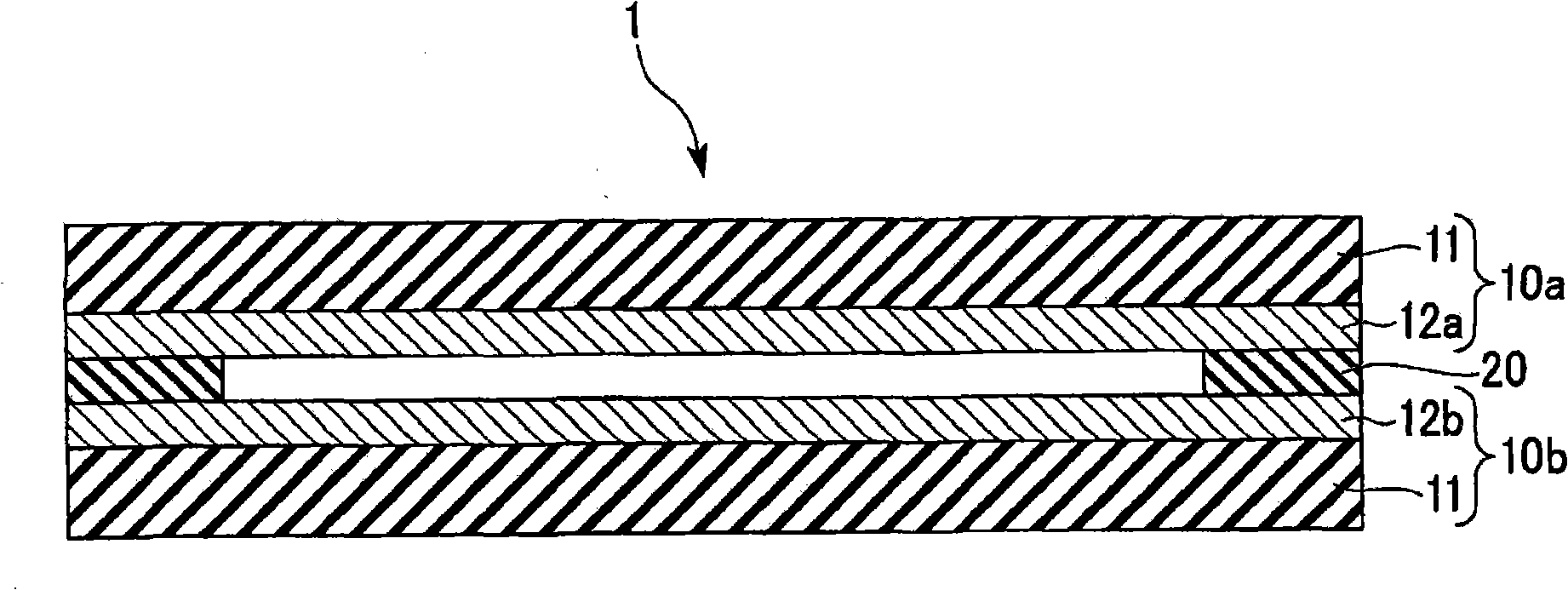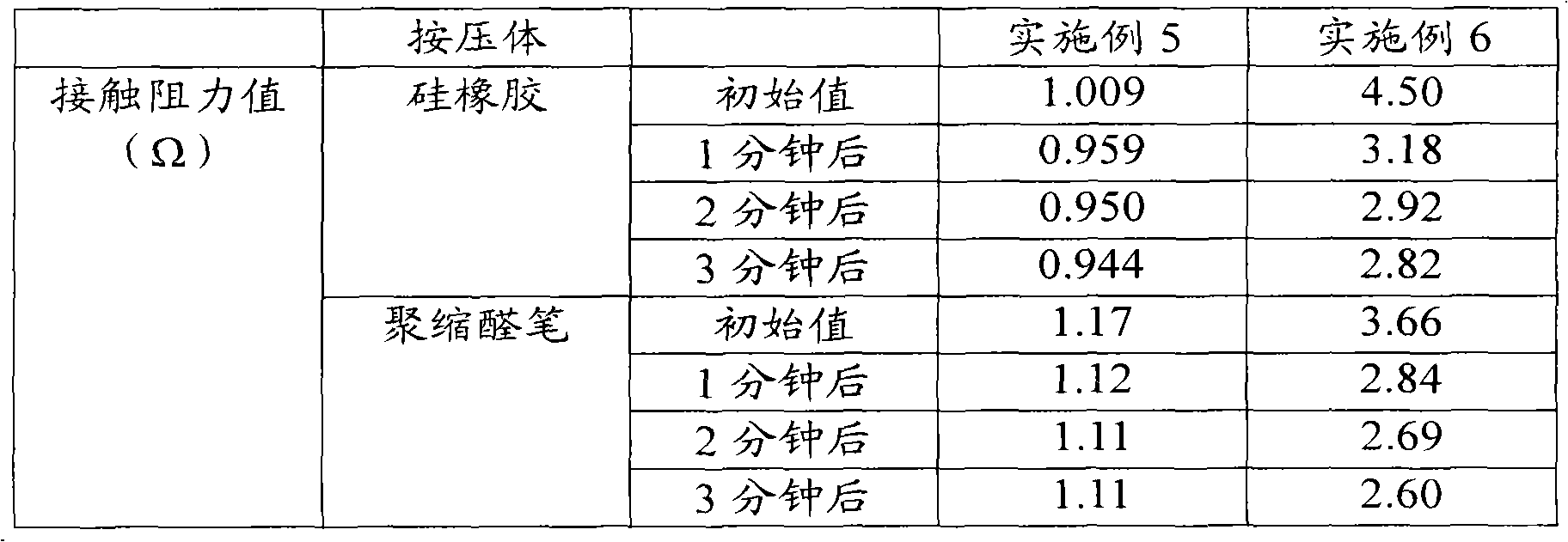Transparent conductive sheet for touch panel, method for manufacturing same and touch panel
A technology of transparent sheets and transparent conductive layers, which is applied in the direction of cable/conductor manufacturing, conductive layers on insulating carriers, circuits, etc., can solve the problem of reduced flexibility of ITO conductive layers, reduced light transmittance, and low image visual recognition and other problems, to achieve the effect of good surface resistance maintenance, good durability, and high operation reliability
- Summary
- Abstract
- Description
- Claims
- Application Information
AI Technical Summary
Problems solved by technology
Method used
Image
Examples
manufacture example 1
[0196] (Production Example 1) Synthesis of polystyrenesulfonic acid
[0197] Dissolve 206 g of sodium styrene sulfonate in 1000 ml of ion-exchanged water, drop 1.14 g of ammonium persulfate oxidant solution predissolved in 10 ml of water in 20 minutes while stirring at 80° C., and stir the solution for 2 hours.
[0198] Add 1,000 ml of sulfuric acid diluted to 10% by mass and 10,000 ml of ion-exchanged water to the obtained sodium polystyrene sulfonate solution, remove about 10,000 ml of the acid solution containing sodium polystyrene sulfonate by ultrafiltration, and add Add 10000ml of ion-exchanged water, and use ultrafiltration to remove about 10000ml of the solution. Repeat the above ultrafiltration operation three times.
[0199] Next, about 10,000 ml of ion-exchanged water was added to the obtained filtrate, and about 10,000 ml of the solution was removed by ultrafiltration. This ultrafiltration operation was repeated three times.
[0200] The ultrafiltration conditio...
manufacture example 2
[0206] (Production Example 2) Synthesis of Esters
[0207] 43.6 g of pyromellitic dianhydride and 73.6 g of glycerin were put into an eggplant-shaped flask, and mixed. The eggplant-shaped flask containing the mixture of pyromellitic dianhydride and glycerin was placed in an oil bath at 100° C., and after stirring for 10 minutes, 0.1 g of p-toluenesulfonic acid was added and stirred for 1 hour. In this way, pyromellitic dianhydride and glycerin undergo a dehydration reaction to obtain a reaction solution containing ester compounds. Therefore, 115 g of ion-exchanged water was added to the obtained reaction solution, stirred to dissolve, and the solution concentration was adjusted by adding ion-exchanged water so that the solid concentration of the solution was maintained at 50% by mass. The aqueous solution obtained by this method is used as an aqueous ester compound solution.
Embodiment 1
[0209] 14.2 g of 3,4-ethylenedioxythiophene was mixed with a solution of 36.7 g of polystyrenesulfonic acid dissolved in 2000 ml of ion-exchanged water at 20°C.
[0210]The thus obtained mixed solution was kept at 20°C, and while mixing and stirring, an oxidation catalyst solution of 29.64 g of ammonium persulfate and 8.0 g of iron sulfate dissolved in 200 ml of ion-exchanged water was slowly added, and stirred for 3 hours to allow reaction.
[0211] 2000 ml of ion-exchanged water was added to the obtained reaction solution, and about 2000 ml of the solution was removed by ultrafiltration. This operation was repeated three times.
[0212] Then, add 200ml of sulfuric acid diluted to 10% by mass and 2000ml of ion-exchanged water to the treatment solution that has undergone the above-mentioned treatment, remove about 2000ml of treatment solution by ultrafiltration, add 2000ml of ion-exchange water therein, and use ultrafiltration method to remove about 2000ml of solution. This ...
PUM
| Property | Measurement | Unit |
|---|---|---|
| radius | aaaaa | aaaaa |
| radius | aaaaa | aaaaa |
Abstract
Description
Claims
Application Information
 Login to View More
Login to View More - R&D
- Intellectual Property
- Life Sciences
- Materials
- Tech Scout
- Unparalleled Data Quality
- Higher Quality Content
- 60% Fewer Hallucinations
Browse by: Latest US Patents, China's latest patents, Technical Efficacy Thesaurus, Application Domain, Technology Topic, Popular Technical Reports.
© 2025 PatSnap. All rights reserved.Legal|Privacy policy|Modern Slavery Act Transparency Statement|Sitemap|About US| Contact US: help@patsnap.com



